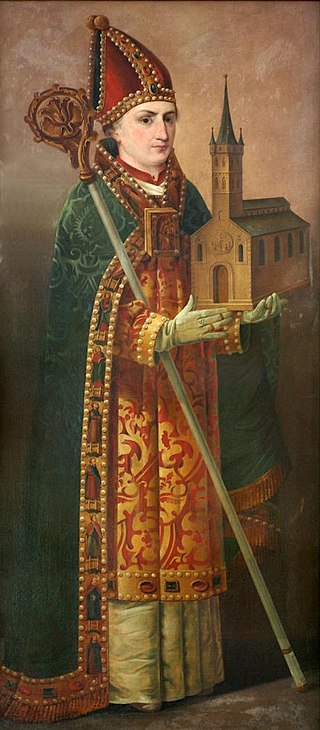
Ansgar, also known as Anskar, Saint Ansgar, Saint Anschar or Oscar, was Archbishop of Hamburg-Bremen in the northern part of the Kingdom of the East Franks. Ansgar became known as the "Apostle of the North" because of his travels and the See of Hamburg received the missionary mandate to bring Christianity to Northern Europe.

Cyril of Jerusalem was a theologian of the Early Church. About the end of AD 350, he succeeded Maximus as Bishop of Jerusalem, but was exiled on more than one occasion due to the enmity of Acacius of Caesarea, and the policies of various emperors. Cyril left important writings documenting the instruction of catechumens and the order of the Liturgy in his day.
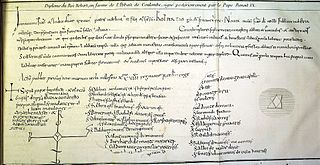
Pope Benedict IX, born Theophylactus of Tusculum in Rome, was the bishop of Rome and ruler of the Papal States for three periods between October 1032 and July 1048. Aged about 20 when first elected, he is the youngest pope in history. He is the only person to have been Pope more than once and the only person ever accused of selling the papacy.

Maximin was the sixth bishop of Trier. His feast is 29 May.
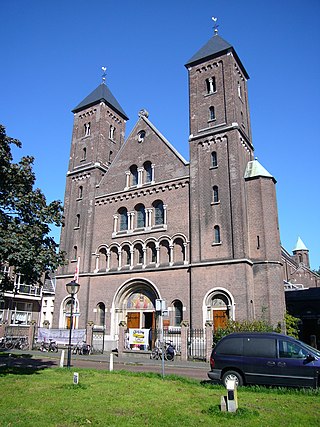
The Old Catholic Church of the Netherlands, sometimes Jansenist Church of Holland, is an Old Catholic jurisdiction originating from the Archdiocese of Utrecht (695–1580). The Old Catholic Church of the Netherlands is the mother church of the Old Catholic Union of Utrecht.

Bruno of Cologne, OCart, venerated as Saint Bruno, was the founder of the Carthusians. He personally founded the order's first two communities. He was a celebrated teacher at Reims and a close advisor of his former pupil, Pope Urban II. His feast day is 6 October.

Gregory Thaumaturgus or Gregory the Miracle-Worker, also known as Gregory of Neocaesarea, was a Christian bishop of the 3rd century. He has been canonized as a saint in the Catholic and Orthodox Churches.
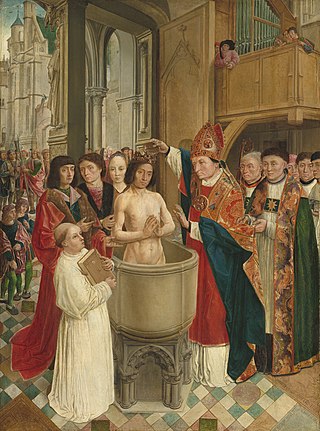
Remigius was the Bishop of Reims and "Apostle of the Franks". On 25 December 496, he baptised Clovis I, King of the Franks. The baptism, leading to about 3000 additional converts, was an important event in the Christianization of the Franks. Because of Clovis's efforts, a large number of churches were established in the formerly pagan lands of the Frankish empire, establishing a distinctly Orthodox variety of Christianity for the first time in Germanic lands, most of whom had been converted to Arian Christianity.
The Holland Mission or Dutch Mission was the common name of a Catholic Church missionary district in the Low Countries from 1592 to 1853, during and after the Protestant Reformation in the Netherlands.

Ludger was a missionary among the Frisians and Saxons, founder of Werden Abbey and the first Bishop of Münster in Westphalia. He has been called the "Apostle of Saxony".

Gregory of Utrecht was born of a noble family at Trier. He became a follower of Saint Boniface, who sent him to study at the Monastery of Saint Michael at Ohrdruf. He then accompanied Boniface on his missionary journeys. In 750, Boniface appointed Gregory abbot of St. Martin's Monastery in Utrecht. St. Martin's became a centre of learning and missionary activity. When, in 754, Eoban left to accompany Boniface on their last missionary trip, Gregory was tasked with administering the diocese of Utrecht, which he did faithfully for the next twenty-three years until his death in 776.
Saint Acathius was bishop of Melitene in the third century, although he is occasionally given as bishop of Antioch. Melitene was the capital of the Roman Province of Second Armenia.

Bernward was the thirteenth Bishop of Hildesheim from 993 until his death in 1022.
Adalgar, venerated as Saint Adalgar, was the third archbishop of Bremen from 888 until his death. Adalgar is revered as a saint in the Roman Catholic and Eastern Orthodox Churches. His feast day is 29 April.
Anastasius I of Antioch was the Patriarch of Antioch twice.
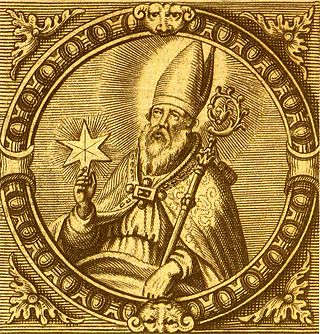
Saint Suitbert, Suidbert, Suitbertus, Swithbert, or Swidbert was born in Northumbria, England, in the seventh century, and accompanied Willibrord on the Anglo-Saxon mission.
Hildegrim was Bishop of Châlons from 804 to 810 and the second abbot of Werden Abbey, after his elder brother Ludger, from 809 until his death.

Eduard Herzog was a Swiss Catholic theologian and cleric who was a native of Schongau, Canton Lucerne. He was the first Christian Catholic bishop of Switzerland.

Christianity in the 8th century was much affected by the rise of Islam in the Middle East. By the late 8th century, the Muslim empire had conquered all of Persia and parts of the Eastern Roman (Byzantine) territory including Egypt, Palestine, and Syria. Suddenly parts of the Christian world were under Muslim rule. Over the coming centuries the Muslim nations became some of the most powerful in the Mediterranean basin.
The historic Diocese of Utrecht was a diocese of the Latin Church of the Catholic Church from 695 to 1580, and from 1559 archdiocese in the Low Countries before and during the Protestant Reformation.













